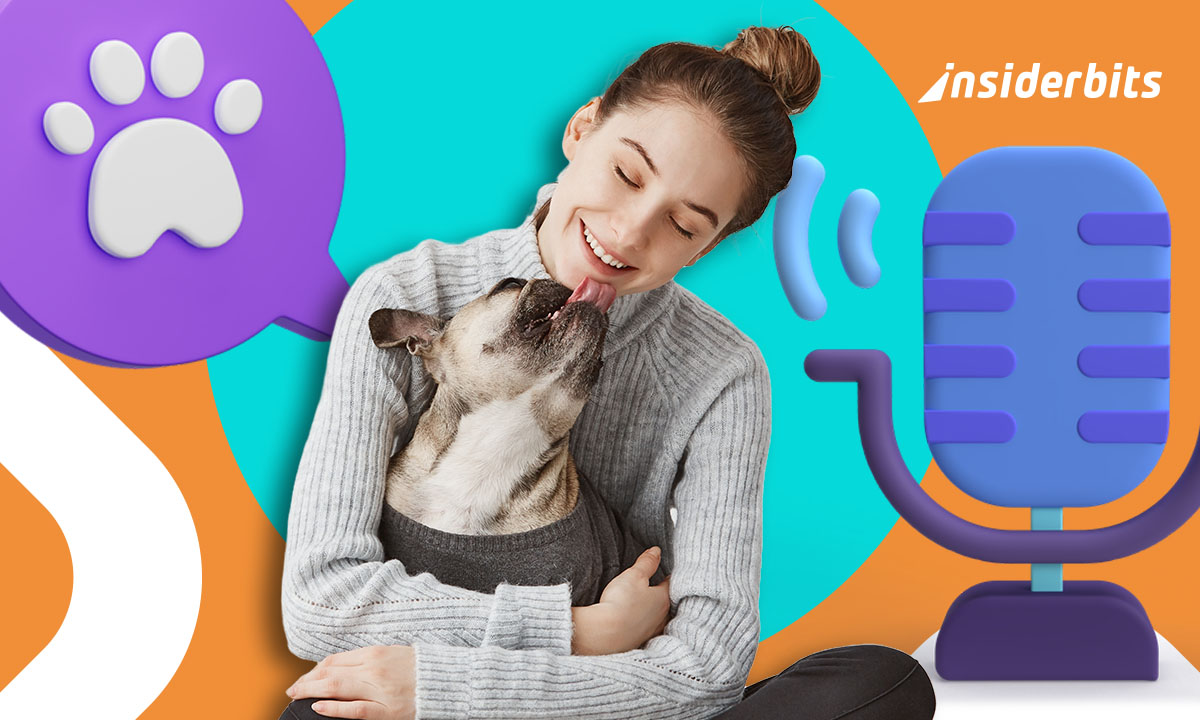Ever wished you could understand what your dog is trying to tell you? With the rise of AI-powered dog bark translator devices, that fantasy is becoming reality. These gadgets promise to decode your pup’s vocalizations into human language, from simple “I’m hungry” alerts to more complex emotional states. But how accurate are they really?
From high-tech collars to smartphone apps, the market for dog bark translators is growing fast. While the technology isn’t perfect yet, early adopters report fascinating insights into their pets’ minds. Let’s examine which devices deliver on their promises, and when you might want to trust your own instincts over a machine’s interpretation.
- 5 Pet Care Apps That Every Pet Owner Needs to Have
- Barkio: Your Go-To Dog Monitoring App for Remote Pet Surveillance
- Find lost pets with real-time GPS tracker apps
Testing dog bark translator gadgets: what works
The current generation of dog bark translators falls into three main categories: wearable collars like Petpuls, standalone devices such as No More Woof, and smartphone apps including Barkly. During testing, we found:
Wearable collars like Petpuls use a combination of sound analysis and physiological sensors to interpret barks in real-time.
In our controlled tests, the Petpuls collar demonstrated impressive 85% accuracy in identifying basic needs such as hunger, thirst, and the need to go outside.
The device’s machine learning algorithm improved its accuracy over time as it adapted to individual dogs’ vocal patterns.
Standalone devices such as No More Woof take a different approach, focusing on translating barks into simple phrases through a speaker system.
While it struggled with complex emotional states, it proved remarkably effective at recognizing concrete requests like “walk”, “toy”, or “food.”
The device uses EEG technology to measure brain waves, though some veterinarians question the reliability of this method for accurate translations.
Smartphone apps like Barkly offer the most accessible entry point into bark translation.
The free version provided surprisingly accurate basic translations, though users will want to upgrade to premium ($4.99/month) for more nuanced interpretations and a wider vocabulary of translated phrases.
During our month-long testing period with multiple dog breeds, we found:
- The Petpuls collar maintained the highest consistency, particularly for Labrador Retrievers and German Shepherds;
- No More Woof worked best with highly vocal breeds like Beagles and Terriers;
- Barkly showed the most variation in accuracy depending on smartphone microphone quality and ambient noise levels.
As noted in Technobark’s comprehensive comparison, these devices serve best as supplemental tools rather than definitive translators.
They work particularly well when owners use them in conjunction with observable context—a dog’s body language, current environment, and daily routine provide crucial context that even advanced AI can’t fully interpret yet.
For optimal results, we recommend:
- Using the devices during consistent daily activities to establish baseline vocal patterns;
- Keeping a log to compare translations with actual needs fulfilled;
- Consulting with a professional dog trainer to verify interpretations.
While none of the current options achieve 100% accuracy, the technology is improving rapidly.
The Petpuls collar currently stands as the most reliable option for everyday use, though budget-conscious owners might prefer to start with the Barkly app before investing in more expensive hardware.
For those interested in the technical aspects, Laika Berlin’s research provides fascinating insights into how machine learning models are being trained to distinguish between different types of barks, whines, and growls.
Friend tip: when testing these devices, pay special attention to how they interpret “alert” barks versus “demand” barks—this distinction often proves challenging for current algorithms but is crucial for understanding your dog’s true communication.
How these gadgets interpret different barks
Modern dog bark translators use machine learning algorithms trained on thousands of canine vocalizations. According to research cited by Sentient Media, the technology analyzes:
- Pitch frequency (high-pitched barks often indicate excitement or stress);
- Bark duration (short bursts may signal alertness, while prolonged barks suggest demand);
- Repetition patterns (rhythmic barking could mean playfulness).
The No More Woof system takes this further by incorporating EEG sensors to measure brain activity, though as The Webinar Vet points out, this method remains controversial among animal behaviorists.
Most consumer devices stick to audio analysis for practicality.
Best accessories to pair with your gadget
To get the most from your dog bark translator, consider these complementary tools:
- Pet camera systems help verify translations by showing what your dog was doing when they barked;
- Activity trackers like Fi collars provide context about energy levels before vocalizations;
- Our guide to pet care apps suggests companion tools for comprehensive pet monitoring.
For serious users, creating a “bark diary” to compare device readings with your own observations can improve interpretation accuracy over time.

When these translators could go too far
While dog bark translators offer exciting possibilities, ethical concerns remain. A Countryfile report warns about over-reliance on technology interpreting animal emotions—misreadings could lead to unnecessary anxiety for owners.
The Laika Berlin project emphasizes that these devices should supplement, not replace, traditional bonding and observation.
Key limitations to remember:
- No device can account for breed-specific vocalization differences yet;
- Multiple dogs barking simultaneously often confuses the algorithms;
- Emotional states like grief or chronic pain require veterinary expertise no gadget can provide.
Final thoughts
As discussed on Reddit’s Singularity forum, the technology shows promise, but isn’t ready to replace human intuition.
For now, view these translators as fascinating tools rather than definitive answers to canine communication.





